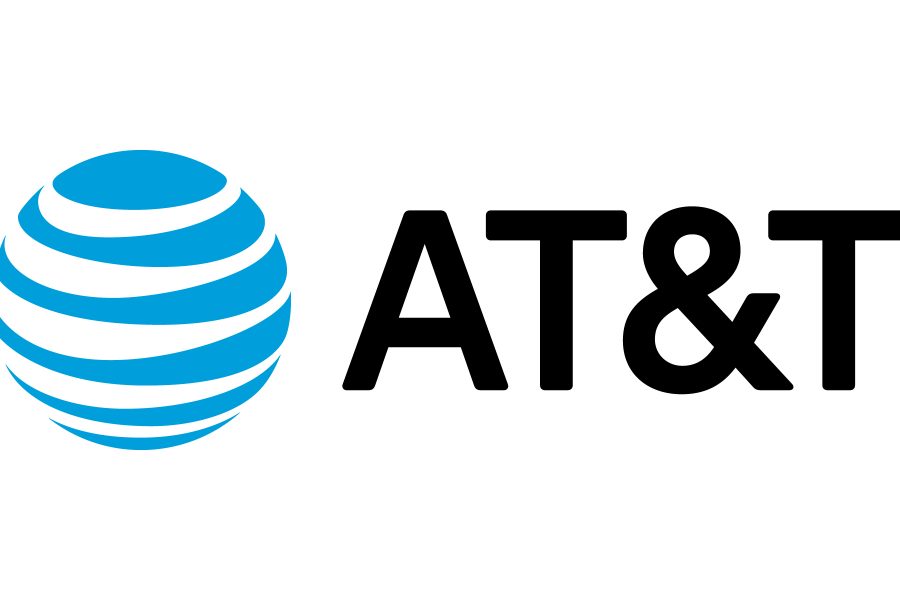Las Vegas smart-lighting pilot with AT&T, Ubicquia highlights scalability, potential for broader smart-city use
City of Las Vegas employees have deployed smart-lighting infrastructure from AT&T and Ubicquia in a pilot project that is designed to help officials evaluate the scalability and sustainability of the solution, as well as the ability for such a partnership to fulfill a key role in a more comprehensive smart-city initiative.
“We’ve entered into a partnership with AT&T and Ubicquia, where the main focus is intelligently controlling our lighting infrastructure—not just controlling it but understanding when lights may be out,” Michael Sherwood, director of innovation and technology for the city of Las Vegas, said during an interview with IWCE’s Urgent Communications. “From a safety concern, having lights out is something that we may not know for days, weeks or months; it depends on whether a citizen calls it in or if we have a crew that drives by and notices that the lighting has gone out.”
But this pilot project being conducted in several parts of Las Vegas is not limited to the ability automate the dimming of LED bulbs and detect outages. City officials also will explore other capabilities enabled by the AT&T-Ubicquia solution, which includes multiple sensors that can provide weather, air-quality and traffic data, Sherwood said.
“With these new data sets, now we can start correlating weather to possible crime in the area,” he said. “We have the lighting information, so if a light is out, we can evaluate whether there is an increase in crime [during outages]. There are all types of new ways of looking at information and being able to make more effective decisions as an organization.”
Such low-data-rate applications are enabled immediately with the installation of Ubicells—Ubicquia’s Dixie Cup-sized routers that replace the photo cells on top of streetlights at a cost that is less than other streetlight controllers on the market, according to Ubicquia CEO Ian Aaron. Ubicells can communicate with each other in a mesh-network architecture or data can be backhauled to a monitoring location via the AT&T cellular network.
“This is the beauty of using the AT&T network: we don’t need any network infrastructure,” Aaron said during an interview with IWCE’s Urgent Communications. “We need zero network infrastructure. Unlike other network topologies like mesh–where they need to have concentrators and repeaters, and they have to be connected—the city doesn’t need anything like that.
“They plug this in, it talks to AT&T’s M2M network—the M1 network—and that’s it.”
As a result, Ubicell deployment can be completed quickly, as was proven in Las Vegas. In fact, the installation was not performed by telecommunications crews but by the city’s streetlight-maintenance workers, Aaron said.
“If you can twist and unplug a photo cell and plug this in, it’s literally a 15- to 20-second install,” he said. “Because of the work we’ve done with AT&T, there’s no provisioning; it’s self-provisioning. So, as soon as it comes up—within in three to five seconds—it’s attached to the network and can be automatically controlled.
“The installation was something that was done pretty effortlessly in a day, and it’s something we can literally take across the city … The whole excitement about our product is that it allows cities like Las Vegas to now start extending these smart-city services at scale. I used to say that smart-cities [technology] has really been in pilot purgatory for years, we’ve created a product that allows cities to really easily start deploying smart-city services and sensors at scale.”
In addition to supporting control and sensor functions, each Ubicell includes a Qualcomm chipset that enables public Wi-Fi access in the 2.4 GHz and 5 GHz bands.
Mike Zeto, AT&T’s vice president and general manager for smart cities, said that supporting robust Wi-Fi service typically calls for fiber backhaul from at least some Ubicell end points, but “it’s not about running fiber to every pole or Wi-Fi mesh, like some of the other providers in the space.”
Sherwood echoed this sentiment, noting that the city is able to leverage its own fiber network
“It’s a mesh network, so what you think about in a 10-block radius is that maybe you have two or three lights connected to our [fiber] network, and from there, you mesh the other ones together,” Sherwood said.
Ubicquia offers the Ubimetro streetlight module that is a small cell designed to support operators’ network-densification efforts that enable various flavors of LTE services, from lower-bandwidth LTE-M (or Cat-M) offerings to the high-bandwidth data rates associated with 4G and future 5G applications that would require more backhaul fiber. Zeto said that AT&T is conducting certification tests on the Ubimetro small cell as it considers various approaches to deploying 5G.
AT&T plans to deploy mobile 5G in Las Vegas beginning later this year.
Sherwood said network data-throughput and latency capabilities will impact the type of smart-city applications that could utilized in a given area.
“For monitoring the weather, for monitoring devices and for turning devices on and off, 4G is sufficient,” Sherwood said. “When we talk about video, we would need the higher speed to get the value out of it and to do analytics.”
Meanwhile, even low-bandwidth connectivity from a Ubicell deployment potentially can create efficiencies for the city, such as by enabling yellow flashing lights at school crossings to be controlled remotely.
“Right now, there’s an expense to being able to communicate with those—you have to go out there and manually change them,” Sherwood said. “So, when school-zone times change, or we move to or from daylight savings time, we have to go out and program those over again. We’re exploring whether we can use this network to effectively manage those types of infrastructure by leveraging our streetlights and empowering them to do more.”
Simply realizing such functionality from an existing asset like streetlights is a potential boon for the city, Sherwood said.
“In most cities, the streetlight network is only utilized half of the day. So, you have this huge infrastructure of lights that only provides any use to a government agency when it is nighttime; during the day, they just sit there,” he said. “Now, we’re able to use this infrastructure to be able to receive data all of the time, and we have the flexibility of extending different types of services using this streetlight infrastructure.”
Sherwood said the Ubicell deployments are also attractive because they do not require the normal regulatory approvals.
“There’s no permitting on those; it’s just installing them on our lights,” Sherwood said. “It’s just replacing the photo eye with a more intelligent photo eye that has additional modules on it to do more things—it creates agility.
“For sustainability, the footprint of these units is extremely low, and the ability to go on existing infrastructure is great. It makes it flexible and easy, and we think—as we go through our pilot here—that it’s a solution that’s completely scalable across the city.”
Zeto said a carrier like AT&T would need to go through a normal permitting process to deploy Ubimetro small cells but noted that the small Ubimetro is drastically different from the traditional macro towers and even typical small cells.
“From a planning perspective, it is aesthetically pleasing … and certainly much easier to install,” Zeto said.
The city of Las Vegas plans to conduct the pilot for six months, after which city officials will decide whether to scale the deployment in other parts of the city, continue the pilot or scrap the effort entirely. Sherwood said he believes the pilot will prove to be successful.
“We’re very confident with AT&T and their bidding process,” Sherwood said. “We’re very confident with Ubicquia as a company that there is a fit—not only is there a fit, but it’s sustainable and creates new efficiencies that we don’t have today.”
Sherwood said that he believes the Las Vegas pilot is an example of a growing trend of cities pursuing public-private partnerships with companies when incentives for both sides align.
“I think this is just the beginning,” Sherwood said. “I think there’s going to be a lot more opportunity for municipal governments and utilities to leverage their infrastructure and find new revenue streams, as well as create new amenities for their citizenry.”
Zeto agreed, noting that AT&T has deployed smart-cities in parts of Atlanta and has signed agreements to develop comprehensive solutions with the cities of San Jose and Los Angeles.
“We are open to public-private partnerships, as they make sense, throughout the United States,” Zeto said. “I think we will see more public-private partnerships and more partners involved in each one. I agree that, if we work together, we will move further ahead faster, not only for the private sector but—more importantly—to be able to serve the needs of citizens from a connectivity, from a public-safety, from an environmental-sustainability and a traffic perspective.
“The public sector and the private sector working together is only going to do more and provide more benefit for the citizens and for the businesses that we all serve and frankly are the customers of the cities. It is important that we do work together and we take a different approach to procurement to those processes and to the strategic deployment of technology to make sure that we’re really are providing it for the public benefit as much as for the needs of the city.”
Ubicquia’s Aaron said his company designed its product portfolio to be flexible enough to provide cities and carriers multiple business-model options, if they want to consider public-private partnerships.
“There’s quite a bit of other activity around public-private, not just for the [streetlight] LED conversion but for everything from the LED to smart-city sensors to public Wi-Fi to small cells,” Aaron said. “That is the reason why we created the product line, so we can give the city the comfort level that, while we have these products today, they may want to deploy them [at different times], first light control, then Wi-Fi and smart-city sensors, like measuring air quality in certain areas. Maybe, as 5G comes out, they may want to densify [sites to support the broadband system].
“Our whole strategy is creating the roadmap but being able to allow the cities and public-private partnerships to scale in a much more cost-effective way.”

















